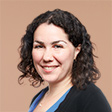How to Find the Right Online Bank for You
The higher interest rates offered by online banks sure are tempting, but do your research first.


Question: I want to open an online high-yield savings or money market account. But because these are new to me, I’m trying to perform my due diligence somehow. Is there anything I need to know or beware of before signing up?
Answer: Start your search at www.bankrate.com or www.depositaccounts.com. Online banks don’t have branches you can walk into to ask for help, but you can find one that offers round-the-clock customer service, such as Ally Bank or Discover Bank. Test out the website of any bank you’re interested in to make sure it’s user-friendly; some online banks maintain clunky, bare-bones websites that are hard to navigate.
Transferring funds from the savings account at your brick-and-mortar bank to a new account at an internet bank can pay off big-time. According to DepositAccounts.com, interest rates for savings accounts at online banks averaged 1.52% at the end of 2018, compared with 0.26% at brick-and-mortar institutions. Consider both savings and money market deposit accounts, which can have comparably high yields. “Online banks have made leaps in how easily someone can open and transfer accounts,” says Aaron Graham, a certified financial planner at Abacus Planning Group, in Columbia, S.C.
From just $107.88 $24.99 for Kiplinger Personal Finance
Become a smarter, better informed investor. Subscribe from just $107.88 $24.99, plus get up to 4 Special Issues

Sign up for Kiplinger’s Free Newsletters
Profit and prosper with the best of expert advice on investing, taxes, retirement, personal finance and more - straight to your e-mail.
Profit and prosper with the best of expert advice - straight to your e-mail.
Don’t be tempted solely by the highest yields; choose an institution that has been around for many years and has a history of paying competitive rates. Sometimes banks will open new accounts with enticing but short-lived promotional rates for new customers. These days, well-established online banks are offering savings account rates between 2.1% and 2.3%, with no minimum balance or monthly fees, says Ken Tumin, of DepositAccounts.com.
To check out a bank’s rate history, visit www.depositaccounts.com and select “Savings Accounts,” then “Personal Savings Accounts.” Scroll past any sponsored accounts, and click on the “Details” arrow for each bank to see a rate history chart.
If you anticipate making frequent transfers between your online savings account and your checking account at a traditional bank, look for an online institution that has a high daily or monthly cap on the dollar size of outside transfers. And if you value easy access to your cash, search for an account that offers a debit or ATM card (such as Synchrony Bank’s High Yield Savings) or check-writing privileges (such as Sallie Mae Bank’s money market account).
Last but not least, make sure the bank you choose is insured in case of failure by the Federal Deposit Insurance Corp., or FDIC. (Online banks typically state that they are covered by the FDIC at the bottom of their home page.) The FDIC will insure up to $250,000 per depositor, per bank, per ownership category. For example, an individual savings account is insured up to $250,000; a couple with a joint account is insured up to $500,000.
If your balance teeters at the edge of that limit, you can open another account at a different bank or use the tool at MaxMyInterest.com, which will spread your cash among high-yield savings accounts at reputable banks, keeping the balances below FDIC limits. But you’ll pay a quarterly fee of 0.02% on your cash balance for the convenience.
Profit and prosper with the best of Kiplinger's advice on investing, taxes, retirement, personal finance and much more. Delivered daily. Enter your email in the box and click Sign Me Up.
